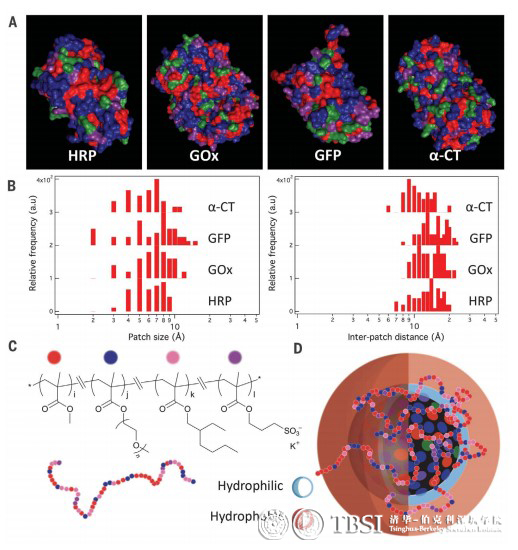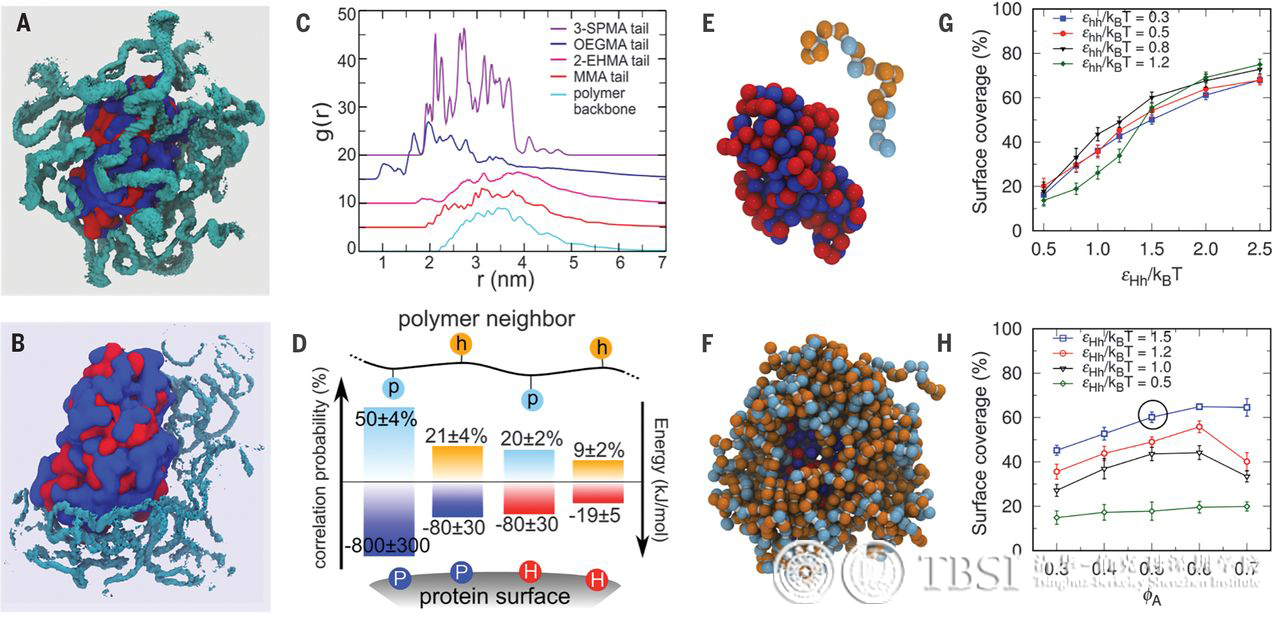Professor Ting XU, the professor of University of California, Berkeley, co-associate director of Precision Medicine and Healthcare Research Center and hard-core scientist of TBSI, and her team published a paper named “Random heteropolymers preserve protein function in foreign environments”, which reveals an important achievement in the polymer research.
Protein mainly be folded into a specific structure and function in its native environment. Despite years of effort to stabilize proteins outside of their native environment, there has been limited development in interfacing biological and synthetic components without compromising their structures and inherent functions. A polymeric shell outside of a protein may effectively improve protein solubility and stability in organic solvents by providing a barrier to resist both organic solvent exposure and protein conformational change. To form such a polymeric shell, protein-polymer interactions need to be strong enough to favor adsorption yet soft enough not to outcompete the forces governing protein folding. Professor Xu and her team realized this.
In the latest research, professor Xu's team designed four-monomer random heteropolymers, each monomer can interact with their interested chemical fragments on the surface of the protein. Then they mimic natural proteins, maximizing the flexibility of their interactions with the protein's surface. It has been proved that this material can make the protein fold correctly in the cell-free synthesis and maintain the activity in organic solvents.

Design of random heteropolymers based on protein surface pattern for protein solubilization and stabilization in organic solvents
The researchers explored the versatility and universality of RHP by extending the study to several proteins. When combining RHP with organophosphorus hydrolase(OPH), it shows excellent ability to degrade organophosphates, which are commonly used as insecticides and chemical warfare agents.

All-atom and CG molecular dynamics simulation results
In the research, fiber mat based on RHP/OPH is prepared and immersed into a well-known pesticide methyl parathion(MP) for bioremediation. It has been proved that fiber mat is active and degraded MP, weighing approximately 1/10 of the total fiber mat, in a few minutes. Moreover, this material can be also used in combination with other proteases, which will play an important role in future biochemical pollution control.
Professor Ting XU is the corresponding author of the published paper, her Ph.D. graduate Brian Panganiban is the first author.
The link of published paper: http://science.sciencemag.org/content/359/6381/1239



